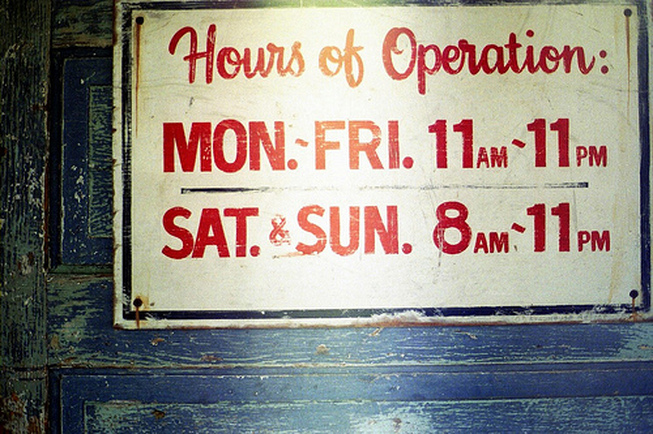Signing a lease is an important decision for any business, whether you’re expanding your operations or a newly formed startup moving into its first space. Retaining an attorney to review your lease is important because entering into a lease for your business is a significant investment, even if your business does not require a huge space. For example, a 10-year lease at $7,500 per month means a $900,000 investment across the life of the lease. With such a substantial sum of money on the line, investing in legal advice to ensure you have an agreement that protects the interests of your business makes considerable sense.
Lawyers experienced in lease negotiations understand how duties, costs and risks of ownership should be shared between a landlord and a tenant. A good lawyer with experience in leasing will be on the lookout for several legal landmines that can result in significant financial burden for a small business owner. Small costs can add up quickly for a small business owner and understanding the language of your lease with the help of a lawyer can prevent getting buried by unexpected costs in the long-term.
The location.
Everyone at one time or another has heard the saying that the three most importance factors in real estate are “location, location and location.” Although many tenants understand this concept, they fail to address the conditions that make the location so desirable in their lease.
For retail tenants, visibility and access can be of critical importance, yet tenants fail to address this issue in their lease. Sometimes, to their dismay, they are left with few options when trees or signage obscure visibility, a fast-food restaurant is built on an out-parcel immediately in front of their storefront, or the curb cuts in the parking lot are changed that results in impeded access to their store. Perhaps the store was initially in an attractive location in the mall, but visibility has been diminished due to the landlord’s installation of a fountain or redevelopment of the mall directs foot traffic away from the store.
For an office tenant, perhaps the key points are the amenities and condition of the property. Office tenants can negotiate to include a provision in the lease that requires landlords to maintain the property in a certain condition and provide services that are consistent with the level of service that made the location desirable to the tenant.
Tenants are sometimes surprised to find that in many leases the landlord has reserved the right to relocate the tenant to a different space in the building or shopping center. Although it is preferable to delete this provision, this is not always possible; however, a tenant can often address the provision in other ways. Perhaps the tenant will have a termination right if it is dissatisfied with the relocated space, or the number of relocations can be limited, or the area of the relocation can be limited (e.g., the lease could provide that the relocated space must be on one of the top five floors of the building).
Understanding the Rent Obligation.
Many clients focus solely on the base rent rate and fail to understand the many other components that can affect the total rent obligation. For example, the manner and method by which a landlord measures the space will affect the amount of rent you pay. Rent is typically calculated on the basis of rentable square feet in the leased space; however, there is a significant difference between rentable square feet and usable square feet, particularly in office buildings where the common areas on multi-tenant floors are allocated and included in the calculation of rentable square footage. Some landlords are more aggressive in the manner in which they calculate rentable square footage, which ultimately results in higher rent.
In addition, unless you have a true “gross lease,” base rent is but one component of the total rent expense. Typically, the tenant is also responsible for its pro rata share of operating expenses, which can include a share of the real estate taxes, common area maintenance expenses and insurance expenses. Tenants can end up paying for costs that aren’t core to the operating of the office building or shopping center or that extend beyond the life of their lease if they don’t read the language carefully. These additional pass-through charges can be substantial and can represent a significant rent expense.
Some leases allow a landlord to put a new roof on the building and charge the entire cost of the roof under operating expenses in a single year, even though a roof is considered a structural element which can have a lifespan of 20 to 25 years. Replacement of a roof is usually considered a landlord’s expense, but at the very least, operating expenses associated with capital expenditures should be spread out over a number of years, with charges stopping at the expiration of the lease.
When comparing locations, a prospective tenant needs to consider these expenses and the manner in which the prospective landlord calculates them. Also, don’t forget to consider the meaning of any “free rent” periods. Many tenants have been surprised to find that the landlord’s offer of “free rent” did not extend to operating expenses.
Repair and Maintenance Obligations.
Who is responsible for what repairs? Leases differ widely on this issue. In a “triple net” lease, the entire obligations for repair and maintenance are shifted to the tenant. In an office lease, most repairs are performed by the landlord, although the landlord typically charges the tenant for alterations or improvements such as new carpet or repairs that are due to an act of the tenant. Many tenants are surprised by the repair provisions of their leases, and first become aware of them when a major repair is required. In a retail lease it is not uncommon for the tenant to be responsible for the maintenance, repair and, if necessary, the replacement of the HVAC unit serving its space, which can be quite a shock and expense for an unsuspecting tenant.
Although it may not be possible to shift these obligations to the landlord, a prospective tenant should have the premises and its mechanical systems inspected prior to entering into the lease so it is better informed as to the likely costs it can expect to incur for maintenance and repair. The tenant must also remember that shifting the responsibility for maintenance and repair to the landlord may not absolve the tenant from financial responsibility if the costs for such maintenance and repair are included in operating expenses that are charged back to the tenant as additional rent. For example, a landlord may be responsible for the maintenance and repair of the roof and the parking lot, but if such costs are passed on to the tenants, then the tenants are really bearing the financial burden.
Accordingly, in order to have a complete understanding of the maintenance and repair obligations, and the financial burdens they entail, the maintenance and repair sections of the lease must be carefully reviewed in conjunction with the lease provisions dealing with operating charges.
Understanding the Assignment and Subletting Provisions.
Most leases provide that the tenant may not assign or sublet without the landlord’s consent and that the landlord may withhold its consent for any reason or no reason. In addition, many leases provide that an assignment includes by definition a change of control in the equity or management of the tenant. These provisions can have a major impact on a tenant’s ability to engage in corporate transactions or exit a location for an alternative site.
Many tenants are surprised that landlords, and particularly retail landlords, are often resistant to a request that their consent to assignment or subletting not be unreasonably withheld. The landlord will often take the position that it should be the sole judge as to the suitability of a proposed subtenant or assignee. However, when pushed, most landlords will at a minimum set forth the requirements and parameters which will be used to judge the suitability of a proposed subtenant or assignee. These parameters may include, for example, suitable financial statements, reputation and experience.
For the retail lease it is also important to remember that the permitted use provisions can have a direct impact on the ability to assign lease or sublet the premises. For example, if the lease allows the premises to be used solely for a retail sales, then any assignment or subletting would have to be for the same use. Most tenants would prefer the flexibility of being able to assign or sublet for a use that is different from their own; however, most landlords would prefer to limit this flexibility.
Improvement Allowances.
Leases can get even more complicated with construction obligations, therefore, it’s important to negotiate which party is responsible for what part of the construction process. Included in this negotiation is the amount the landlord is willing to give in allowances. Since construction projects can take years, and recessions and budget cuts can occur between a project’s start and end date, tenants should be aware of what they’re responsible for and what they’re owed in the event that things go differently than expected.
For example, the landlord is responsible to pay a tenant improvement allowance after the tenant had finished the tenant’s work; however, between the signing of the lease and completion of the tenant’s work, the landlord suffered financial problems. The lender foreclosed on the property and, since there wasn’t any assurance to provide financial support for the landlord’s promise to pay the allowance, the tenant found itself in the unhappy predicament of not having its allowance easily forthcoming and having to work through issues with the foreclosing lender, at substantial unbudgeted expense.
The common pitfalls listed above are only a few of the problems that can be encountered in a typical commercial lease. Leases are negotiated documents that represent the written culmination of a negotiated transaction and although there are obvious similarities between many lease transactions, each transaction is unique and accordingly each lease is different.
There is no “standard form” lease that is appropriate for all situations. Having a lawyer who is familiar with the leasing process, lease documents and their hidden traps is the best way of ensuring that your transaction will go as smoothly as possible and that the lease accurately represents your understanding and expectations, and protects your interests.
If you need assistance in negotiating your commercial lease, please contact the attorneys at Morsel Law.







